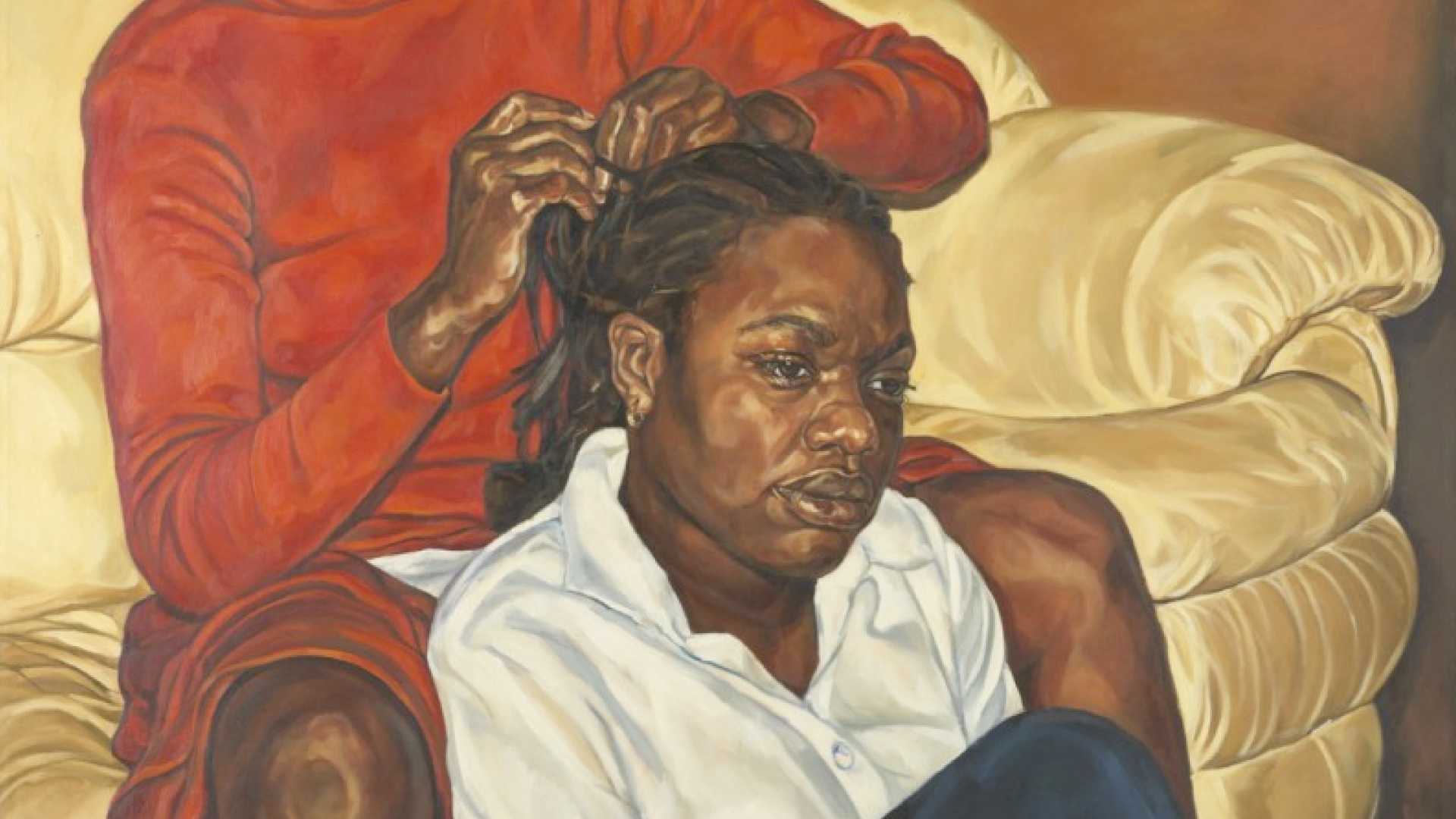on
BY SIMONE J. SMITH
I parked my car outside of the AGO excited to have been invited to an art exhibit that was heralded by the UK Guardian as “Exhilarating, mighty and tender,” and The Times as “Highly evocative.”
Life Between Islands: Caribbean-British Art, 1950s-Now, opened at the Art Gallery of Ontario (AGO) on December 6th, 2023. It traces the extraordinary impact of Caribbean art and thought on British art history over seven decades. This poetic and powerful exhibition crosses the Atlantic for the first time, making its North American debut in Toronto. It is co-curated by David A. Bailey, Director, Artistic Director of the International Curators Forum, and Alex Farquharson, Director, Tate Britain, Life Between Islands at the AGO is overseen by Julie Crooks, Curator, Arts of Global Africa, and the Diaspora.
Life Between Islands features artwork by more than 30 artists – from the Caribbean and those influenced by it. Artists featured include Aubrey Williams, Donald Locke, Horace Ové, Isaac Julien, Sonia Boyce, Claudette Johnson, Peter Doig, Hurvin Anderson, Barbara Walker and Alberta Whittle.
As myself, and other media entities were guided through the exhibit, I was moved by how the exhibit utilized: poetry, film, activism and music to reflect how Caribbean-British artists forged new identities, communities, and cultures in Britain, often in the face of hostility and discrimination.
The exhibit takes its title from the Jamaican-British writer Stuart Hall’s memoir, “Familiar Stranger: A Life Between Two Islands.” It bestows credence to a story reverberating with many voices and told in four parts. Life Between Islands at the AGO is dedicated to the memory of the influential Trinidadian artist Horace Ové (1939-2023), and features artworks by the following artists: Hurvin Anderson, Frank Bowling, Sonia Boyce, Vanley Burke, Pogus Caesar, Blue Curry, Paul Dash, Peter Doig, Denzil Forrester, Claudette Johnson, Liz Johnson Artur, Rachel Jones, Tam Joseph, Isaac Julien, Roshini Kempadoo, Neil Kenlock, Donald Lock, Hew Locke, John Lyons, Michael McMillan, Althea McNish, Steve McQueen, Marcia Michael, Ronald Moody, Dennis Morris, Chris Ofili, Horace Ové, Charlie Phillips, Keith Piper, Ingrid Pollard, Barbara Walker, Vron Ware, Alberta Whittle, Aubrey Williams, Denis Williams.
“It is a great pleasure to welcome these artworks and artists to Toronto – many of whom for the first time,” shares Julie Crooks, AGO Curator, Arts of Global Africa, and the Diaspora. “This exhibition was a hugely important event in Britain. It invites us to continue the conversations the AGO began in 2021 with Fragments of Epic Memory, to share great art often unseen here in Canada and to consider the extraordinary impact that the Caribbean diaspora has had in Britain and globally. I’m confident that Toronto audiences – particularly those with personal connections to the Caribbean – will see aspects of their own experience in these histories. The scale, richness and power of these artworks defy easy categorization and need to be seen.
In mounting Life Between Islands, we undertook what no major British museum had done to date, which is to tell the history of British art from a Caribbean vantage point, but we did that knowing the impact of the Caribbean Diaspora is truly global and that the experiences and ideas that fuel these artworks resonate far beyond Britain’s shores. Seeing this exhibition reborn in Toronto has been inspiring, and we eagerly look forward to seeing what audiences here bring to it.”
Julie is absolutely correct. There is such historical richness throughout the exhibit, I found myself at times feeling pangs of nostalgia, when certain images were presented to me. What caught me the most was a new immersive installation by artist and playwright Michael McMillan, entitled “The Front Room: Inna Toronto/6ix.” It is the latest in a series of installations designed to expose the social underpinnings of our domestic spaces. When we were there, McMillan invited us to make ourselves at home in the front room of a Caribbean immigrant family in suburban Toronto in the 1980s.
“Life Between Islands: Caribbean-British Art, 1950s-Now,” is accompanied by a 244 page, fully illustrated hardcover catalogue, published by Tate Britain, and an anthology entitled, “Liberation Begins in the Imagination: Writings on British Caribbean Art,” from Tate Publishing and ICF the International Curators Forum.
The curation of the exhibit is a work of art in itself, with pieces strategically placed to create a dynamic flow and narrative. Themes offered us a journey through emotions and perspectives of the people. The artists’ statements accompany each piece, providing insights into their creative process, inviting us to engage with the deeper meaning behind the artworks.
The diversity of the artists featured in the exhibit is striking. They create a rich tapestry of voices and visions, a celebration of artistic evolution, with traditional techniques converging with cutting-edge technologies, resulting in a fusion of the old and the new.
As I explored the exhibit, I couldn’t help but feel a sense of awe and inspiration. It’s not just a display of skillful craftsmanship, but a testament to the power of art to transcend boundaries and connect people on a profound level. This incredible art exhibit is not just a collection of pieces; it’s a living, breathing testament to the limitless potential of human creativity.
Admission to Life Between Islands: Caribbean-British Art, 1950s-Now is free for AGO Members, Annual Pass holders, visitors 25 and under, and Indigenous peoples. AGO Members see it first, beginning December 6th, 2023. Annual Pass holders and single ticket buyers see it beginning December 8th, 2023, at 6:00 p.m.
Annual Passes are only $35 ($5 more than General Admission) and include free access to the AGO Collection and all special exhibitions for twelve months. The exhibition runs until April 1st, 2024.
Stay in the loop with exclusive news, stories, and insights—delivered straight to your inbox. No fluff, just real content that matters. Sign up today!
We, as humans are guaranteed certain things in life: stressors, taxes, bills and death are the first thoughts that pop to mind. It is not uncommon that many people find a hard time dealing with these daily life stressors, and at times will find themselves losing control over their lives. Simone Jennifer Smith’s great passion is using the gifts that have been given to her, to help educate her clients on how to live meaningful lives. The Hear to Help Team consists of powerfully motivated individuals, who like Simone, see that there is a need in this world; a need for real connection. As the founder and Director of Hear 2 Help, Simone leads a team that goes out into the community day to day, servicing families with their educational, legal and mental health needs.Her dedication shows in her Toronto Caribbean newspaper articles, and in her role as a host on the TCN TV Network.













